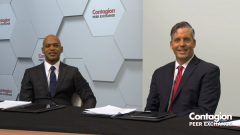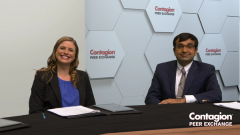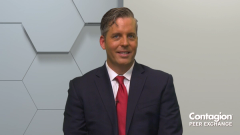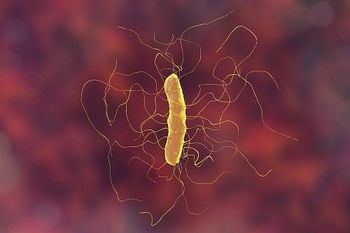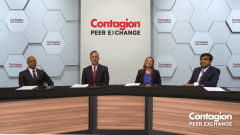
Looking Toward the Future of CDI Management
Closing out their discussion on Clostridioides difficile infection, panelists share closing thoughts on novel pipeline therapies.
Episodes in this series

Transcript:
James A. McKinnell, MD: Before we transition out here, any thoughts on the future pipeline, phase 2 data, or phase 1 data, what’s the future here?
Kelly R. Reveles, PharmD, PhD, BCPS: There are lots of potential options, more second-generation FMT [fecal microbiota transplantation] products that we can talk about, but we also have other narrow-spectrum antibiotics in the pipeline. The closest is ridinilazole, which is similar to fidaxomicin, and it’s going to target Clostridioides difficile and kill it very well, but also spare our commensal microbiota. The phase 2 data look great, it helped prevent recurrence among patients who received ridinilazole compared to oral vancomycin. That’s exciting to me.
Sahil Khanna, MBBS, MS: There are 2 other microbiome-based therapies that have finished phase 2 clinical trials and 1 that has finished a phase 1 clinical trial. Going alphabetically, CP101 is a full-spectrum microbiome-based therapy that recently finished a phase 2 clinical trial and showed a 74.5% versus close to 60% success rates. This is going to go to a phase 3 clinical trial in the near future. There’s another one that is a room temperature stable or nonfrozen formulation of a capsule called RBX7455, and that one finished a phase 1 study with a 90% success rate, and a larger trial is being planned at this time. Then finally, moving on to what I call designer microbiome-based therapies, where the field is going to go, is VE303, which is from a donor-independent bacterial consortia. Recently in a press release, they had their phase 2 data presented, where the high-dose VE303 was statistically significant and clinically meaningfully different from the placebo in preventing recurrent C diff infection. There is lots of excitement going on in today’s world.
Carl V. Crawford, MD: There’s one more. There’s a company now with a particular single strain of bacterium that thrives on a particular oligosaccharide that’s found in certain kinds of fibers where they’re hoping that this 1 strain, which would be a true probiotic, would be able to reduce the risk for recurrences of C diff. We’ve really painted the entire spectrum of all the different therapeutic options. We start with full-spectrum stool, which is basically the entire biodiversity. We move toward another company that basically focuses on the different consortia, or the ecological niches, where defects in metabolism can then just be plugged right back in. Then we have these companies that are more designer that have found out that maybe we can pick this handful of species alone and give them back to our patients. And then companies that are probably more savvy have figured out that there may be some species that have multiple functions, and you may just need to give 1 species back. And of course, as we are scientists, we can figure out what we don’t need to give an organism back, we can just find the products that they produce or the proteins that are on their surface and use those. There’s a whole different spectrum of therapeutic options, which is great for our patients because at that point, we have options to choose what’s going to work best for patients in different scenarios.
James A. McKinnell, MD: So the future is bright. I would like to ask all of our participants to give us a final thought.
Carl V. Crawford, MD: One of the things that we sometimes neglect is how devastating this disease is to our patients. We talked about the diarrhea itself, we talked about the hospitalization, the epidemiology, the impact on hospitals, but at the same time, there are a number of patients who have their lives turned upside down because of the first infection or the recurrences. I’ve taken care of patients who have lost their jobs, I’ve taken care of patients who can’t be with their families, who ask me if they can see their grandchildren. I’ve seen patients who have developed this post-traumatic stress disorder from having C diff infections. If we think about the thousands and thousands of recurrences that we see each year, there are thousands and thousands of people who are not the same after this infection. I’d like to stress to everyone who’s watching to read these guidelines and look to see what is the appropriate way to treat these patients the first time because that gives them the best chance of success of beating this infection so that they can go back to their normal lives afterward.
James A. McKinnell, MD: Kelly?
Kelly R. Reveles, PharmD, PhD, BCPS: That was beautifully said, Carl. This infection creates a huge burden on individual patients, but also on our health care system. I’d also like to mention that the microbiome field and microbiome therapeutics are burgeoning right now. We are learning new things every single day, and some of these microbiome-targeted therapies are ultimately going to be studied in other diseases too, so hopefully, we can make an impact elsewhere in addition to C diff infections. And the last thing I’ll say is, eat your fiber and close the toilet lid when you flush.
Sahil Khanna, MBBS, MS: I’ll add 2 things. One thing to add to Carl’s point that is paramount is educating our patients on the impact of this illness. When you see a patient for the first time, don’t just hand out an antibiotic prescription and say, “You’ll be fine.” Patient education is paramount. There are resources that are available at the CDC’s [Centers for Disease Control] website, NIH [National Institutes of Health] has resources, and also the C Diff Foundation is a tremendous resource that I suggest to my patients. The other point that I would make is that as these microbiome-based therapies become mainstay, they’re going to move from tertiary care centers, from infectious disease and GI [gastrointestinal] doctors to empower primary care providers, family practice providers, nurse practitioners, physician assistants, who are the first touchpoints that our patients sometimes have with recurrent C diff. They should start thinking that they should be and will be able to prescribe these therapies to our patients.
James A. McKinnell, MD: Thank you for watching this HCPLive® Contagion® Peer Exchange. If you enjoyed the content, please subscribe to our e-newsletters to receive upcoming Peer Exchanges and other great content right in your inbox.
Transcript edited for clarity.
Newsletter
Stay ahead of emerging infectious disease threats with expert insights and breaking research. Subscribe now to get updates delivered straight to your inbox.

